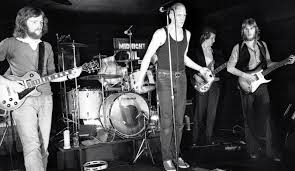 Midnight Oil emerged in the late 1970’s as band of purpose and integrity, prepared to take their songs into areas where few other artists were prepared to go. To the indigenous communities of Australia’s central and western deserts. To midtown, Manhattan for a guerrilla-style- protest -against the Exxon Oil company (below). To a heaving Ellis Park Stadium in Johannesburg, South Africa, in that country’s first post-apartheid, multi-racial concert, following the election of President Nelson Mandela.
Midnight Oil emerged in the late 1970’s as band of purpose and integrity, prepared to take their songs into areas where few other artists were prepared to go. To the indigenous communities of Australia’s central and western deserts. To midtown, Manhattan for a guerrilla-style- protest -against the Exxon Oil company (below). To a heaving Ellis Park Stadium in Johannesburg, South Africa, in that country’s first post-apartheid, multi-racial concert, following the election of President Nelson Mandela. In purpose and integrity also lies resistance and refusal. A refusal to play/mime on Countdown, Australia’s long-running answer to England’s Top Of The Pops that was all but compulsory Sunday-night home viewing for over a decade from 1975-1987 in suburban lounge rooms. The many declined invitations to tour South Africa, for as long as Apartheid remained in place.
In purpose and integrity also lies resistance and refusal. A refusal to play/mime on Countdown, Australia’s long-running answer to England’s Top Of The Pops that was all but compulsory Sunday-night home viewing for over a decade from 1975-1987 in suburban lounge rooms. The many declined invitations to tour South Africa, for as long as Apartheid remained in place. There was even a declined invitation to the Grammy awards in 1988, at the apex of Midnight Oil’s international success, so singer Peter Garrett could attend a protest at home against Bicentennial celebrations of the European invasion of Australia on 26 January 1788. Midnight Oil had their own priorities, their own agendas, and you either loved or loathed them, there was no middle ground.
There was even a declined invitation to the Grammy awards in 1988, at the apex of Midnight Oil’s international success, so singer Peter Garrett could attend a protest at home against Bicentennial celebrations of the European invasion of Australia on 26 January 1788. Midnight Oil had their own priorities, their own agendas, and you either loved or loathed them, there was no middle ground. It would be Rob Hirst (below) (born 1955) who attended Sydney Grammar School College and a Year 9 Sydney Church of England Grammar School student Jim Moginie (born 1956), also known as Shore, (students pictured above), who would meet and form a garage band that would ultimately become the creative core of Midnight Oil. Hirst was a fan of the Beatles, Stones, Doors, Bob Dylan, Creedence Clearwater Revival, the Who and he idolised their drummer Peter Moon.
It would be Rob Hirst (below) (born 1955) who attended Sydney Grammar School College and a Year 9 Sydney Church of England Grammar School student Jim Moginie (born 1956), also known as Shore, (students pictured above), who would meet and form a garage band that would ultimately become the creative core of Midnight Oil. Hirst was a fan of the Beatles, Stones, Doors, Bob Dylan, Creedence Clearwater Revival, the Who and he idolised their drummer Peter Moon. 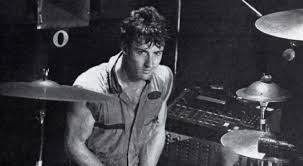 Jim Moginie was an adopted child who sought solace and isolation in the music of the Beatles, respectively he and Hirst would create the distinctive melodies and chords of Midnight Oil, and create a musical hybrid, that sounded like no one else. Jim Moginie became a multi-instrumentalist, proficient at guitar, keyboards, and a prolific songwriter. Rob Hirst was a celebrated and gifted drummer and creator of memorable melodies. They went to university in 1974, Jim completed a science degree and post-graduate studies in audio-engineering, and Rob graduated in law, there they met bass player Andrew Jones and the three-man Schwampy Moose was formed , a covers band who favored Beatles and CCR songs that soon segued to become Sparta, who began to embrace the progressive rock of several British bands including Yes and King Crimson.
Jim Moginie was an adopted child who sought solace and isolation in the music of the Beatles, respectively he and Hirst would create the distinctive melodies and chords of Midnight Oil, and create a musical hybrid, that sounded like no one else. Jim Moginie became a multi-instrumentalist, proficient at guitar, keyboards, and a prolific songwriter. Rob Hirst was a celebrated and gifted drummer and creator of memorable melodies. They went to university in 1974, Jim completed a science degree and post-graduate studies in audio-engineering, and Rob graduated in law, there they met bass player Andrew Jones and the three-man Schwampy Moose was formed , a covers band who favored Beatles and CCR songs that soon segued to become Sparta, who began to embrace the progressive rock of several British bands including Yes and King Crimson.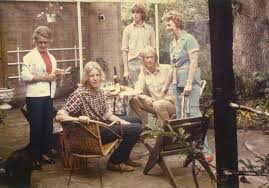 Peter Garrett was born in 1953 in Wahroonga, north-west of Sydney, into a Protestant working-class family, he was the eldest of three sons, whose father died whilst he was a teenager. In the picture above are Peter (seated centre), his brothers Andrew and Matthew and at far right his mother Betty, attending a family barbecue. Growing up Peter was a boy scout, he surfed, and attended as a boarder at Barker College (Hornsby) which he abhorred; his early musical influences were Split Enz, the Bee Gees, the Saints, Skyhooks and Muddy Waters. While enrolled in arts/law at the Australian National University, he joined the covers band Devil’s Breakfast (below), in November 1973, he answered an advertisement placed by Rob Hirst in the Sydney Morning Herald to audition for the position as lead singer with Sparta, who were about to change their name to Farm.
Peter Garrett was born in 1953 in Wahroonga, north-west of Sydney, into a Protestant working-class family, he was the eldest of three sons, whose father died whilst he was a teenager. In the picture above are Peter (seated centre), his brothers Andrew and Matthew and at far right his mother Betty, attending a family barbecue. Growing up Peter was a boy scout, he surfed, and attended as a boarder at Barker College (Hornsby) which he abhorred; his early musical influences were Split Enz, the Bee Gees, the Saints, Skyhooks and Muddy Waters. While enrolled in arts/law at the Australian National University, he joined the covers band Devil’s Breakfast (below), in November 1973, he answered an advertisement placed by Rob Hirst in the Sydney Morning Herald to audition for the position as lead singer with Sparta, who were about to change their name to Farm.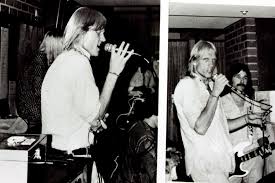 Garrett sang Jethro Tull’s Locomotive Breathing at the audition, Hirst and Moginie didn’t think that he had the best voice of those who had tried out for the job, but he did have a unique sound, a charismatic presence, and importantly his own public address system! Garrett would take another year to complete his law studies, and then join the band, in 1975.
Garrett sang Jethro Tull’s Locomotive Breathing at the audition, Hirst and Moginie didn’t think that he had the best voice of those who had tried out for the job, but he did have a unique sound, a charismatic presence, and importantly his own public address system! Garrett would take another year to complete his law studies, and then join the band, in 1975.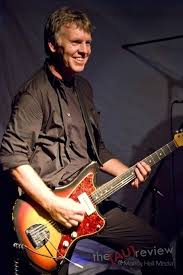 Martin Rotsey’s (1956, above) family had emigrated to Australia from the UK, when he was twelve, like Rob Hirst he also attended Sydney’s Grammar School College where he played with garage band Gunja, in late 1971 Rotsey’s Gunja and Hirst and Moginie’s garage band performed together for the first time at a concert held at the Sydney Grammar School College Science Auditorium, and greatly impressed those in attendance. They would subsequently hook up again at university, where Rotsey was studying architecture, and by 1975 they were performing as Farm, playing professionally, and effecting a glitter band’s look and sound, very prog – rock inspired and covering the songs of Yes and Focus as well as some Beatles and CCR. In 1976 they changed their name to Midnight Oil, inspired by the expression “burning the midnight oil” and the Jimi Hendrix song from 1967, Burning of the Midnight Lamp.
Martin Rotsey’s (1956, above) family had emigrated to Australia from the UK, when he was twelve, like Rob Hirst he also attended Sydney’s Grammar School College where he played with garage band Gunja, in late 1971 Rotsey’s Gunja and Hirst and Moginie’s garage band performed together for the first time at a concert held at the Sydney Grammar School College Science Auditorium, and greatly impressed those in attendance. They would subsequently hook up again at university, where Rotsey was studying architecture, and by 1975 they were performing as Farm, playing professionally, and effecting a glitter band’s look and sound, very prog – rock inspired and covering the songs of Yes and Focus as well as some Beatles and CCR. In 1976 they changed their name to Midnight Oil, inspired by the expression “burning the midnight oil” and the Jimi Hendrix song from 1967, Burning of the Midnight Lamp.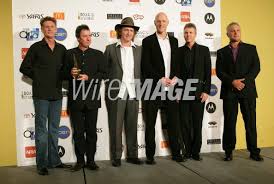 Garry Morris (far right in shot above) became their manager and by 1977 the band were Rob Hirst (drums), Jim Moginie (guitar), Martin Rotsey (guitar), Andrew Jones (bass) and Peter Garrett (vocals), and apart from replacing their bassist several times, they would maintain the same core of personnel over an amazing twenty years. The band and its management were united in not pandering to the dictates of Australia’s most influential live TV music program Countdown, and they never appeared. They debuted at French’s Wine Bar in Darlinghurst and were gigging around Sydney at the Royal Antler Hotel, the Bondi Lifesaver, and the Chatswood Charles Hotel, with a set list that included a mix of prog-rock covers and such original songs as Missy, Gettin’ Gone, Ensemble, Blue December, Drought, Nothing Lost, Nothing Gained, Powderworks, and Run By Night, several of which would appear on their early albums.
Garry Morris (far right in shot above) became their manager and by 1977 the band were Rob Hirst (drums), Jim Moginie (guitar), Martin Rotsey (guitar), Andrew Jones (bass) and Peter Garrett (vocals), and apart from replacing their bassist several times, they would maintain the same core of personnel over an amazing twenty years. The band and its management were united in not pandering to the dictates of Australia’s most influential live TV music program Countdown, and they never appeared. They debuted at French’s Wine Bar in Darlinghurst and were gigging around Sydney at the Royal Antler Hotel, the Bondi Lifesaver, and the Chatswood Charles Hotel, with a set list that included a mix of prog-rock covers and such original songs as Missy, Gettin’ Gone, Ensemble, Blue December, Drought, Nothing Lost, Nothing Gained, Powderworks, and Run By Night, several of which would appear on their early albums.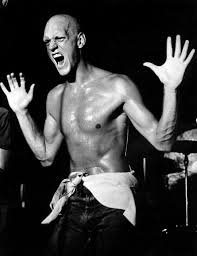 In 1978 Peter Garrett lost his mother in a horrific house fire at Lindfield, from which he narrowly escaped after trying to rescue her, and sustained burns to his body. Following his recovery the band continued to impress at live gigs with their raw energy and the visceral power of Garrett, so well described by the late Andrew McMillan at the time “… a politely reserved guy to chat with but onstage… his dark eyes recede from his bald skull like dark caves. Gouged holes. And the gleaming skull jerks, nestles into a twisted shoulder and he shudders like a psychotic killer on the loose. A haunted spectre of the rock ‘n’ roll vocalist, his singing ranges from thundering bass to whirling Split Enz wails.” Garrett would become one of the most outspoken and iconic singers of his generation, notable as much for his unique vocal style as his onstage rants which preceded most songs, and his movements which were also not standard pop star showmanship, he danced in a mesmerising, slightly robotic way, with riveting, rhythmic hand gestures – highly focused, exuberant, entranced, and slightly intimidating.
In 1978 Peter Garrett lost his mother in a horrific house fire at Lindfield, from which he narrowly escaped after trying to rescue her, and sustained burns to his body. Following his recovery the band continued to impress at live gigs with their raw energy and the visceral power of Garrett, so well described by the late Andrew McMillan at the time “… a politely reserved guy to chat with but onstage… his dark eyes recede from his bald skull like dark caves. Gouged holes. And the gleaming skull jerks, nestles into a twisted shoulder and he shudders like a psychotic killer on the loose. A haunted spectre of the rock ‘n’ roll vocalist, his singing ranges from thundering bass to whirling Split Enz wails.” Garrett would become one of the most outspoken and iconic singers of his generation, notable as much for his unique vocal style as his onstage rants which preceded most songs, and his movements which were also not standard pop star showmanship, he danced in a mesmerising, slightly robotic way, with riveting, rhythmic hand gestures – highly focused, exuberant, entranced, and slightly intimidating.
As the band progressed, the song writing powers of Hirst and Moginie in particular, would achieve a balance between melody and power chords which would allow Garrett to unleash his demons in between them. Complemented by the fine performance skills of all band members, they would become one of the most iconic live bands on the planet over the next decade, Sydney’s radio Double J adopted them before they had even released a record. 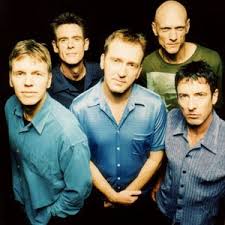 Midnight Oil above at the 1993 Glastonbury Festival, left to right – Martin Rotsey, Bones Hillman, Jim Moginie, Peter Garrett, and Rob Hirst.
Midnight Oil above at the 1993 Glastonbury Festival, left to right – Martin Rotsey, Bones Hillman, Jim Moginie, Peter Garrett, and Rob Hirst.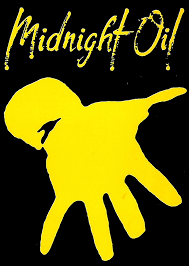



There is so much incorrect information in this.Yes, Jim Moginie went to Shore (Sydney Church of England Grammar School) in Blue St, North Sydney, but both Martin Rotsey and Rob Hirst went to Sydney Grammar School, in College St, Sydney. Martin was a boarder with me at Sydney Grammar (the boarding house at Randwick, which closed in 1986, only had 80 boarders, most of whom were children of farmers and diplomats; Martin was the latter). Martin and Rob did their HSC in 1973, going to university in 1974.
Jim and Rob, although at different schools, had a band who were all Shore boys except for Rob. Martin had a separate Grammar Boarders band called Gunja (Martin: guitar, Michael Deep: vocals, Chris Done: Bass, John Lodwick: drums).
In late 1971, the two bands in their School Certificate year (year 10) performed a lunchtime concert at the Sydney Grammar Science Auditorium. At the end of that concert, the two bands performed together, and the Rotsey/Hirst/Moginie magic was heard for the first time. I was there, and was absolutely awestruck. Soon after, Gunja folded and Rotsey was invited to join Hirst and Moginie. Band names ahead of “Midnight Oil” were “Farm” and “Free Beer”.
LikeLike
Hi Charlie, thanks for your comments and additional information about the garage era grass roots of the schoolboys who became the core of the legendary Midnight Oil. I have amended my blog to reflect your first hand knowledge of the scholastic profiles of Hirst, Moginie, and Rotsey, I hope you enjoyed my further blogs of the Oils, incidentally are you able to confirm the name of the band that Hirst and Moginie first formed while attending different schools, available info is either scarce or contradictory. Finally, apologies for not responding sooner, but I have just returned from a short vacation without access to my laptop, best regards Graeme Davy 4TR.
LikeLike
My apologies also for the delay in replying.
I can’t be certain but I think “Schwampy Moose” was the band that played with “Gunja” at the Science Auditorium.
Doing the pub rounds, they also briefly had a name “Free Beer” (probably 1974), which pubs loved as a way of attracting patrons for obvious reasons.
I don’t think “Farm” came into being until 1975 (their second year of uni), or perhaps even a year later.
I’m still in touch with Rob and Martin at School reunions. It’s our 50th this year, so presume they’ll be there and I can try and fill in some gaps in these names.
LikeLike
Hi Charlie, thanks for keeping in touch, I have reflected your earlier feedback in my Oils blog and always appreciate any first hand knowledge about the band, so enjoy your reunion, and thanks again for your interest, regards Graeme 4TR.
LikeLike